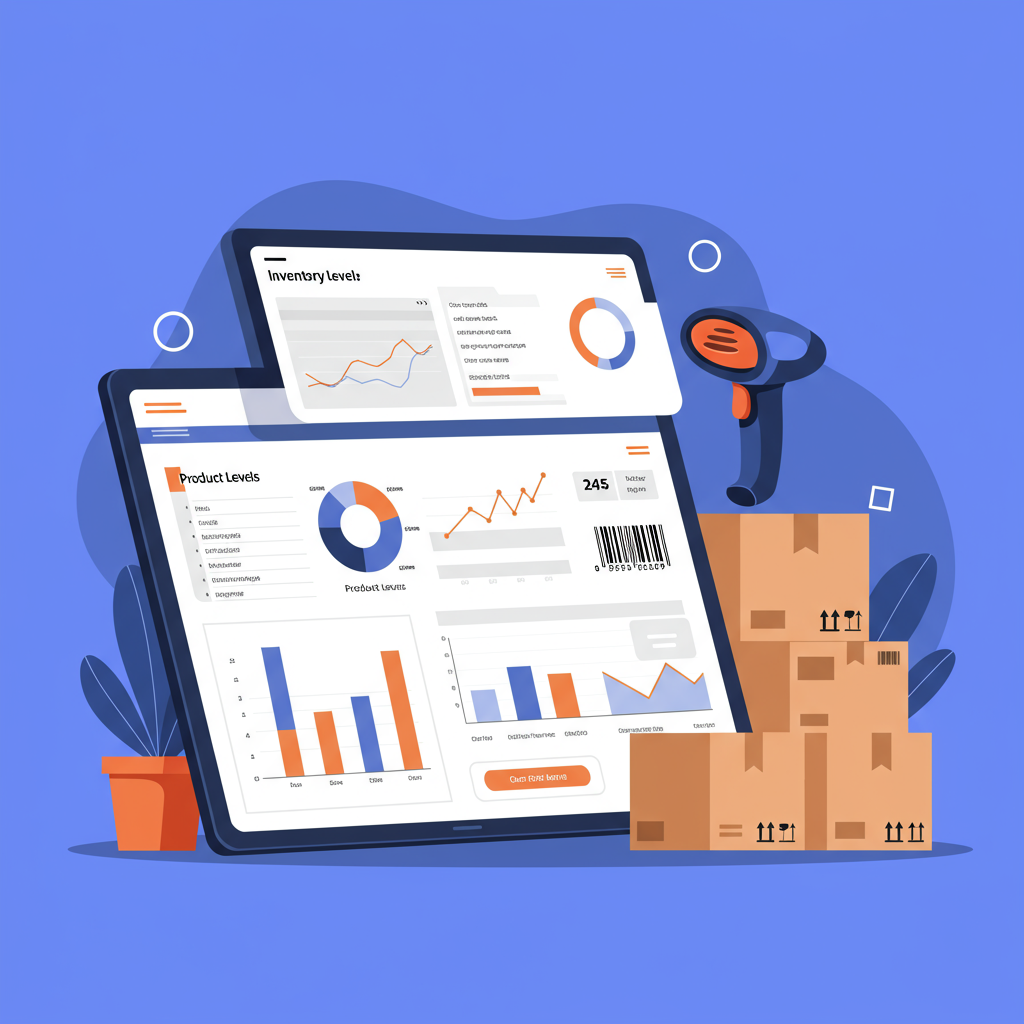A Merchant’s Guide to Streamlining Stock and Boosting Profits
As a Shopify merchant, I’ve learned firsthand that managing inventory isn’t just a task; it’s the backbone of a successful e-commerce operation. Without proper control, you’re looking at stockouts, overselling, and ultimately, unhappy customers.
For years, I struggled with spreadsheets and manual updates, trying to keep pace with orders and incoming stock. It was a constant battle, prone to errors, and incredibly time-consuming.
I quickly realized that as my store grew, this manual approach was simply unsustainable. It was holding me back from scaling, and frankly, causing a lot of unnecessary stress.
That’s when I began my deep dive into Shopify inventory management apps. My goal was to find solutions that could automate, optimize, and provide real-time visibility into my stock levels.
The market is flooded with options, each promising to be the ultimate solution. My journey involved extensive research, trials, and even some costly mistakes, which I hope to help you avoid.
Before we dive into specific apps, let’s talk about what I believe are the non-negotiable features every good inventory management system should offer.
Firstly, real-time synchronization is paramount. Your online store needs to reflect accurate stock levels instantly, preventing oversells and ensuring customers can only purchase what’s actually available.
Secondly, multi-location support is crucial if you store inventory in more than one warehouse, fulfillment center, or even a physical retail store. This allows for centralized management across all locations.
Robust order management capabilities are also key. The app should seamlessly integrate with your Shopify orders, updating stock levels as soon as a purchase is made and tracking fulfillment status.
Comprehensive reporting and analytics are invaluable. I look for features that provide insights into sales trends, popular products, slow-moving items, and inventory turnover rates.
Forecasting tools, even basic ones, can be a game-changer. They help predict future demand based on historical data, allowing you to make smarter purchasing decisions and avoid stockouts or overstocking.
Barcode scanning integration significantly speeds up receiving, picking, and packing processes, drastically reducing human error. This is a must-have for efficiency.
Supplier management features, such as purchase order creation and tracking, streamline communication with your vendors and ensure timely replenishment of stock.
Finally, consider integrations. Does the app play well with other tools you use, like accounting software, shipping carriers, or CRM systems? A cohesive ecosystem is always better.
Now, let’s review some of the top contenders I’ve encountered and what I’ve learned about them.
**Stocky by Shopify:** This is Shopify’s own inventory management app, and it’s free for Shopify POS Pro users. It offers basic inventory tracking, purchase orders, and reporting.
I found Stocky to be excellent for smaller businesses or those just starting out, especially if you’re already heavily invested in the Shopify ecosystem and use their POS system.
Its integration is seamless, as you’d expect. However, it lacks advanced features like multi-warehouse support beyond basic locations, complex manufacturing, or deep forecasting.
**Katana MRP:** If you’re a merchant involved in manufacturing or assembly, Katana MRP is a strong contender. MRP stands for Manufacturing Resource Planning, and it excels here.
I was impressed by its ability to manage raw materials, track work-in-progress, and schedule production orders. It provides a clear overview of your entire manufacturing process.
While powerful for manufacturers, it might be overkill and more expensive for pure retail or dropshipping businesses that don’t deal with production.
**QuickBooks Commerce (formerly TradeGecko):** This platform is designed for growing businesses, particularly those involved in wholesale, B2B, or multi-channel sales.
I found its robust features for managing complex pricing tiers, B2B portals, and multiple currencies to be incredibly useful for larger operations.
It offers strong inventory control, order management, and integrates well with QuickBooks accounting. The learning curve can be steeper, and it comes with a higher price tag.
**SKULabs:** For merchants with significant warehouse operations and a need for efficient picking, packing, and shipping, SKULabs stands out.
I appreciated its focus on barcode scanning workflows, batch picking, and integration with various shipping carriers. It’s built to optimize fulfillment.
It’s a more specialized tool, so if your primary need is just basic inventory tracking, it might be more robust than necessary, but for high-volume fulfillment, it’s a winner.
Choosing the right app really boils down to your specific business needs, size, and budget. Don’t just pick the most popular one; pick the one that solves *your* problems.
Consider your current inventory volume, the complexity of your supply chain, whether you manufacture, and your future growth plans. A scalable solution is always a wise investment.
When implementing a new system, I always recommend a phased approach. Start with data migration, ensure accuracy, and then gradually roll out features to your team.
Training your staff thoroughly is non-negotiable. A powerful tool is only as good as the people using it. Invest time in proper onboarding and ongoing support.
In conclusion, investing in a robust Shopify inventory management app is not an expense; it’s an investment in your business’s efficiency, profitability, and customer satisfaction.
It frees up your time from tedious manual tasks, allowing you to focus on growth strategies, marketing, and product development.
I truly believe that the right app can transform your operations from chaotic to controlled, giving you peace of mind and a clear picture of your most valuable assets.
What do you think about this article? Did I cover the apps you were curious about, or do you have other recommendations? I’d love to hear your thoughts.






